John Garth
J.R.R. Tolkien Encyclopedia: Scholarship and critical assessment
Edited by Michael D.C. Drout. Routledge 2005, paperback 2013
The J.R.R. Tolkien Companion and Guide
Christina Scull and Wayne G. Hammond HarperCollins 2006
© John Garth. Reproduced from the Times Literary Supplement, 22/29 December 2006, with permission, and slightly updated.
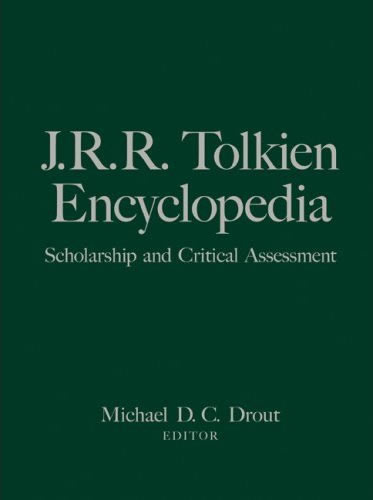 Depth and detail: These two substantial reference works reflect the coming of age of Tolkien studies
Depth and detail: These two substantial reference works reflect the coming of age of Tolkien studies
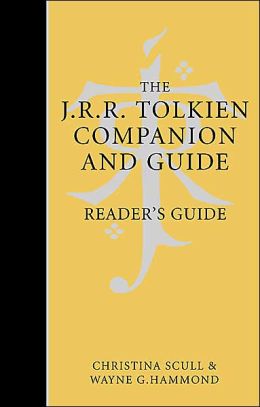
Tolkien encyclopedias have been around for years. The kind of book which might refresh your knowledge of the Gondorian kin-strife or the geography of the Shire, they were intended for those fascinated by the teeming detail of Tolkien’s imagined world, not for those seeking to understand his work as literature, let alone for those perplexed by his success. The phenomenon reflected a tendency which only began to recede with the publication of Jane Chance's Tolkien's Art: A Mythology for England in 1979 and Tom Shippey’s The Road to Middle-earth in 1982. With the same eagerness that enthusiasts staked their claim to Tolkien, literary criticism had spurned him.
Now, as a sign of the coming of age of Tolkien studies, we have two works of reference which attempt to breach the old barriers. One compiles the work of 128 contributors, the other is written by two authors; each publication exemplifies the benefits and disadvantages of these modes of production.
Finally available in paperback in 2013 at a relatively affordable price, the J.R.R. Tolkien Encyclopedia seethes with insight and opinion. It benefits greatly from articles by acknowledged experts, such as Shippey himself, and Verlyn Flieger, the author of Splintered Light: Logos and Language in Tolkien’s World (revised edition 2002). The guiding hand of Michael Drout, an Anglo-Saxonist, is evident in the high proportion of medieval entries, which further emphasizes both Tolkien’s contribution to English philology and English philology’s contribution to Tolkien. There are valuable articles on the medieval cultures, languages and philosophies familiar to Tolkien but not to most readers. What might have surprised the old professor is the use made of critical theory: race and gender studies, subject theory and semiotics, textuality and orality.
In between, among much else, are discussions of translations, fandom and film. All this is worthwhile: the more Tolkien’s success baffles the sceptics, the more it demands serious examination. Less welcome are descriptions of fictitious characters, places and totems whose sole frame of reference is Middle-earth, as if such entries had strayed in from the old-style Tolkien encyclopedias. The admirable articles on Gollum and Gandalf, which probe literary technique and mythical parallels, ought to have served as models for the rest. It is to be hoped that a revised edition, whether printed or digital, might streamline the entries and iron out the distracting errors and overlaps.
Like the J.R.R. Tolkien Encyclopedia, the Reader’s Guide volume of The J.R.R. Tolkien Companion and Guide lists people and places of significance to Tolkien. But it is much more thoroughgoing: every faculty colleague at Leeds and Oxford appears; every available work, down to the shortest individually published poem, receives a summary and (where possible) a textual and critical history. The Silmarillion, compiled by Christopher Tolkien from a complex of texts, is wisely treated in discrete sections by chapter.
The Reader’s Guide bears no resemblance to the old-style Middle-earth encyclopedias; its focus is on biographical, bibliographical and textual matters. This methodical thoroughness is only to be expected from Christina Scull and Wayne G. Hammond, who wrote the standard guide to Tolkien’s visual art and last year produced a Reader’s Companion to The Lord of the Rings’. However, the handling of themes and critical issues here is much less ambitious than in the J.R.R. Tolkien Encyclopedia. It is also easy to lose one’s way in the Reader’s Guide, which would have benefited from headwords on each page as well as a thematic list of entries, or even division into a ‘Who’s Who’, a ‘Where’s Where’ and so forth.
Scull and Hammond draw on some of the family papers previously seen only by authorized biographer Humphrey Carpenter, and they also gather much information from more dispersed material; it is a pity that they have not methodically provided source notes. For anyone examining Tolkien’s life, their 800-page timeline should prove invaluable. No biographer now should have any excuse for regurgitating (as too many have done) Carpenter’s venerable but slight biography of 1977.
It is tempting to call these impressive works of reference definitive, but that would miss the point. The mapping of a complex critical and contextual landscape by Michael Drout’s team, and Christina Scull and Wayne Hammond’s generous dispensation of biographical and textual apparatus, should facilitate more effective exploration of Tolkien as a writer, not make it unnecessary.
The Worlds of
J.R.R. Tolkien
UK hardback

US hardback

To buy in French, Russian, Czech, Spanish, Italian, Finnish, Hungarian, German, or another language
see links here
Buy
Tolkien and
the Great War
UK paperback/ebook
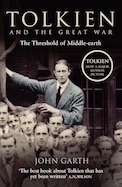
US paperback/ebook
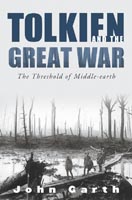
Audiobook read by
John Garth
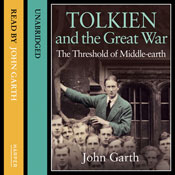
Amazon UK, Audible UK,
Audible US
To buy in Italian, German, French, Spanish or Polish,
see links here
Buy
Tolkien at
Exeter College
